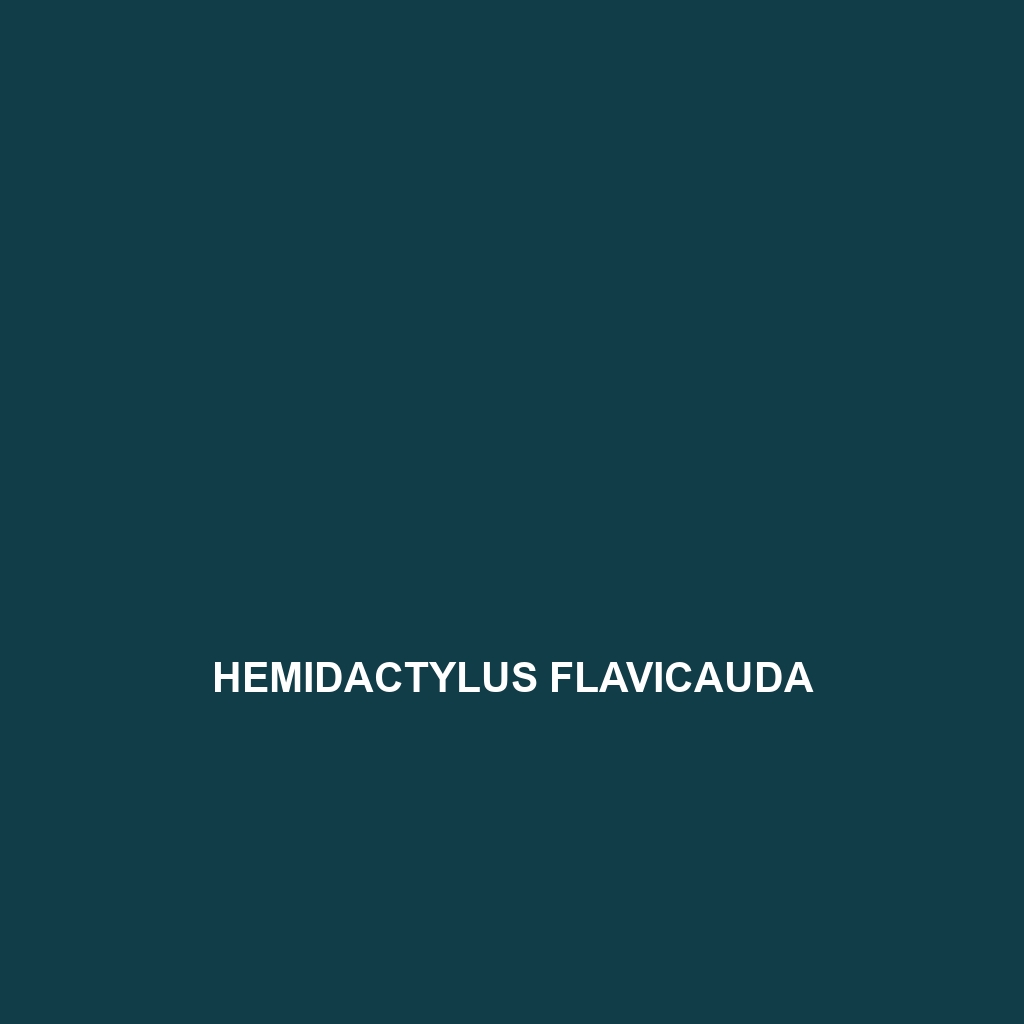Common Name
Hemidactylus flavicauda
Scientific Name
Hemidactylus flavicauda
Habitat
The Hemidactylus flavicauda, commonly known as the yellow-tailed gecko, is primarily found in a variety of habitats that include rainforests, savannas, and temperate forests. This species is indigenous to regions in South Asia, particularly in countries such as India and Sri Lanka. Preferring warm climates, these geckos thrive in environments that offer ample shelter and humidity. The moist conditions of tropical rainforests provide an ideal setting for the yellow-tailed gecko, allowing them to hunt effectively while remaining concealed from predators. The adaptability of Hemidactylus flavicauda to various ecological conditions highlights its resilience and ability to survive in changing environments.
Physical Characteristics
The Hemidactylus flavicauda is a medium-sized gecko, typically ranging from 12 to 20 centimeters (approximately 4.7 to 7.9 inches) in length. This species is characterized by its distinctively yellow or golden tail, which plays a crucial role in its identification. The body color varies from gray to brown, often featuring a pattern of spots that serve as camouflage against the bark of trees and jagged rocks. One unique feature of the H. flavicauda is its specialized toe pads, which enable it to climb vertical surfaces with ease. This adaptation is particularly advantageous for escaping predators and hunting for food in its natural habitat.
Behavior
Hemidactylus flavicauda exhibits fascinating nocturnal behavior, making it highly active at night. During the day, these geckos tend to remain hidden in crevices or beneath logs to avoid the heat and conserve energy. Social interactions among individuals include territorial displays and occasional vocalizations, which can provide insights into their mating rituals. Additionally, while exploring their habitats, these geckos have been observed engaging in a unique behavior known as tail autotomy, allowing them to shed part of their tail to evade predators, which can later regenerate.
Diet
The yellow-tailed gecko is primarily an insectivore, feeding on a diet rich in various insects, including crickets, beetles, and moths. However, they will opportunistically consume other small invertebrates when available. Their hunting strategy involves utilizing their keen eyesight and quick reflexes to catch prey, showcasing their adaptability in securing food resources in the wild. The presence of abundant insect populations in their habitat directly influences the growth and reproduction of H. flavicauda, highlighting its role in local ecosystem dynamics.
Reproduction
The reproductive cycle of Hemidactylus flavicauda is characterized by distinct seasonal patterns. Mating typically occurs during the warmer months, where males exhibit vibrant coloration and engage in courtship displays to attract females. After a gestation period of approximately 30 days, females lay two eggs, which are often hidden in sheltered locations to protect them from predators. Parental care is minimal; however, the hatchlings are well-equipped to survive on their own shortly after they emerge, showcasing a reproductive strategy that enhances their survival rate in the wild.
Conservation Status
Currently, Hemidactylus flavicauda is listed as Least Concern by the International Union for Conservation of Nature (IUCN), indicating a stable population trend. However, habitat loss due to urbanization and deforestation poses a potential threat to their long-term survival. Conservation efforts are crucial to ensure the preservation of their natural habitats. Initiatives aimed at habitat restoration and creating protected areas can contribute positively to the species’ future, allowing it to thrive in its native environments.
Interesting Facts
An intriguing aspect of the Hemidactylus flavicauda is its remarkable ability to change color in response to environmental factors, particularly temperature and light. This adaptation not only aids in camouflage but also plays a role in thermoregulation. Moreover, the yellow-tailed gecko is often used in scientific studies to understand gecko adhesion mechanisms, providing insights into the development of advanced materials inspired by their unique toe structures.
Role in Ecosystem
Hemidactylus flavicauda plays a vital role in its ecosystem as both a predator and prey. By controlling insect populations, these geckos help maintain ecological balance. Additionally, they serve as a food source for various larger animals, including birds and small mammals, further integrating into the food web. Their presence contributes to the overall health of their habitat, making them an essential component of local biodiversity.
